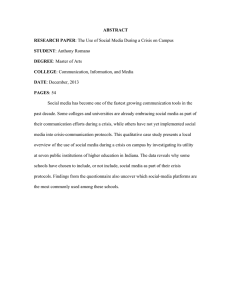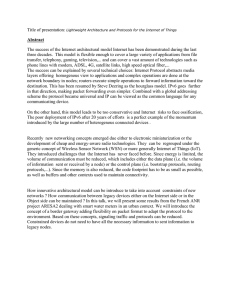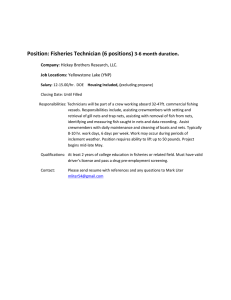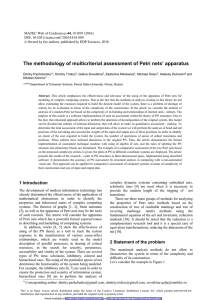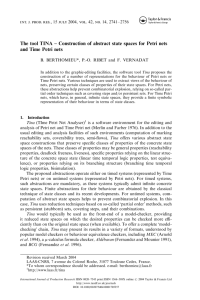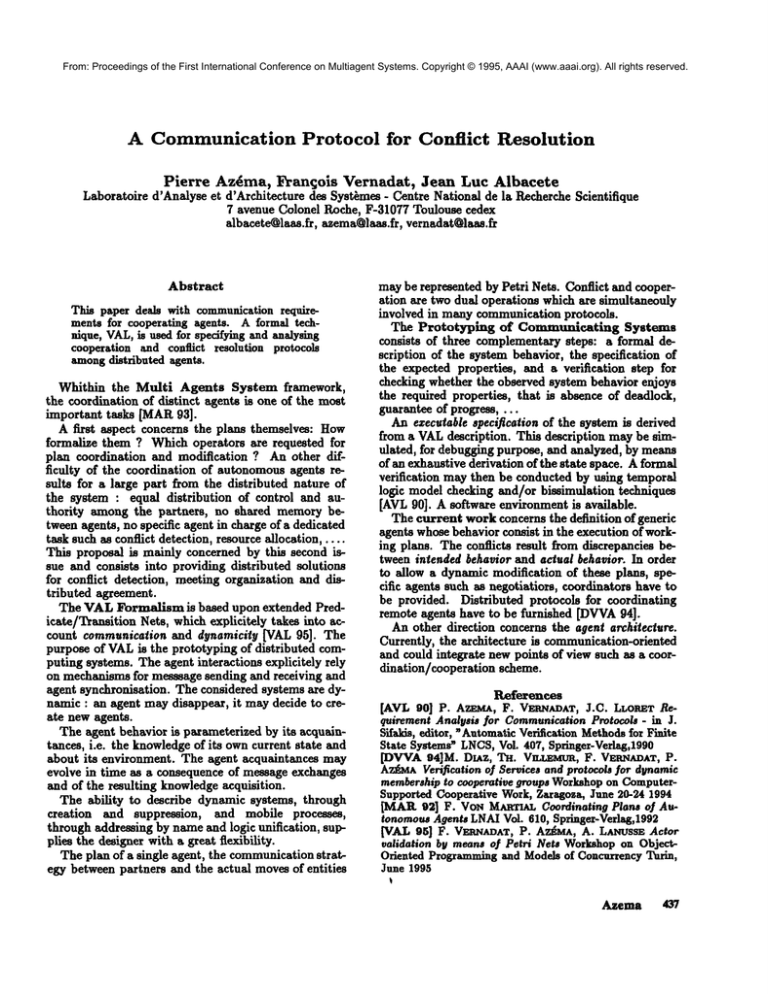
From: Proceedings of the First International Conference on Multiagent Systems. Copyright © 1995, AAAI (www.aaai.org). All rights reserved.
A Communication
Protocol
for
Conflict
Resolution
Pierre Az6ma, Pran~ois Vernadat, Jean Luc Albacete
Laboratoire d’Analyse et d’Architecture des Syst~mes - Centre National de la Recherche Scientifique
7 avenue Colonel Roche, F-31077 Toulouse cedex
albacete~laas.fr, azema@laas.fr, vernadat~laas.fr
Abstract
This paper deals with communication reqairements for cooperating agents. A formal techaique, VAL,is used for specifying and analysing
cooperation and conflict resolution protocols
amongdistributed agents.
Whithin the Multi Agents System framework,
the coordination of distinct agents is one of the most
important tasks [MAR93].
A first aspect concerns the plans themselves: How
formalize them ? Which operators axe requested for
plan coordination and modification ? An other difficulty of the coordination of autonomous agents resuits for a large part from the distributed nature of
the system : equal distribution
of control and authority among the partners, no shared memory between agents, no specific agent in charge of a dedicated
task such as conflict detection, resource allocation, ....
This proposal is mainly concerned by this second issue and consists into providing distributed solutions
for conflict detection, meeting organization and distributed agreement.
The VALFormalism is based upon extended Predicate/Transition Nets,whichexplicitely
takesintoaccount communication and dynamicity [VAL95]. The
purpose of VALis the prototyping of distributed computing systems. The agent interactions explicitely rely
on mechanisms for mesmagesending and receiving and
agent synchronisation. The considered systems are dynamic : an agent may disappear, it may decide to create new agents.
The agent behavior is parameterized by its acquaintances, i.e. the knowledgeof its owncurrent state and
about its environment. The agent acquaintances may
evolve in time as a consequence of message exchanges
and of the resulting knowledgeacquisition.
The ability to describe dynamic systems, through
creation and suppression,
and mobile processes,
through addressing by name and logic unification, supplies the designer with a great flexibility.
The plan of a single agent, the communicationstrategy between partners and the actual movesof entities
may be represented by Petri Nets. Conflict and cooperation are two dual operations which are simultaneouly
involved in many communication protocols.
The Prototyplng
of Commnnle.~ttiwg Systems
consists of three complementary steps: a formal description of the system behavior, the specification of
the expected properties, and a verification step for
checking whether the observed system behavior enjoys
the required properties, that is absence of deadlock,
guarantee of progress ....
An ezecutable specification of the system is derived
from a VALdescription. This description may be simuiated, for debugging purpose, and analyzed, by means
of an exhaustive derivation of the state space. A formal
verifcation may then be conducted by using temporal
logic model checking and/or bissimulation techniques
[AVL90]. A software environment is available.
The current work concerns the definition of generic
agents whose behavior consist in the execution of working plans. The conflicts result from discrepancies between intended behavior and actual behavior. In order
to allow a dynamic modification of these plans, specific agents such as negotiatiors, coordinators have to
be provided. Distributed protocols for coordinating
remote agents have to be furnished [DVVA94].
An other direction concerns the agent architecture.
Currently, the architecture is communication-oriented
and could integrate new points of view such as a coordination/cooperation scheme.
Sefe~ellces
[AVL90] P. AZebta, F. VEP, NADAT,
J.C. LI~OaETRequirement Analysis yor CommunicationProtocols - in J.
Sifakis, editor, ~ AutomaticVerification Methodsfor Finite
State Systems~ LNCS,Vol. 407, Springer-Verlag,1990
[DVVA94]M. D]Az, TH. Vn.LBMmt, F. VERNADAT,
P.
AZ~MAVerification of Services and protocols ]or dynamic
membershipto cooperative groups Workshopon ComputerSupported Cooperative Work, Zaxagoza, June 20-24 1994
[MAR92] F. VoNMARTIAL
Coordinating Plans oJ AutonomousAgents LNAIVol. 610, Spzinge~-Vedag,1992
[VAL 95] F. VI~2~ADAT,P. AROMA,
A. LANUSSE
Actor
validation by means of Petri Nets Workshopon ObjectOriented Programmingand Models of Concun~ncyTurin,
June 1995
Azema
437

